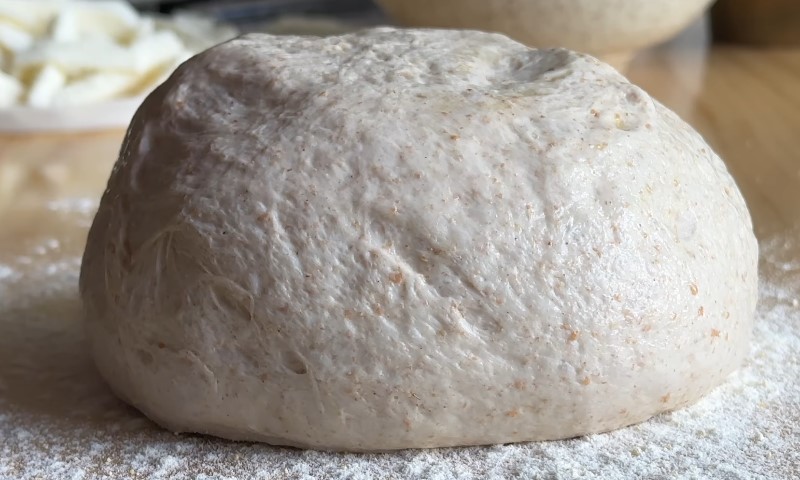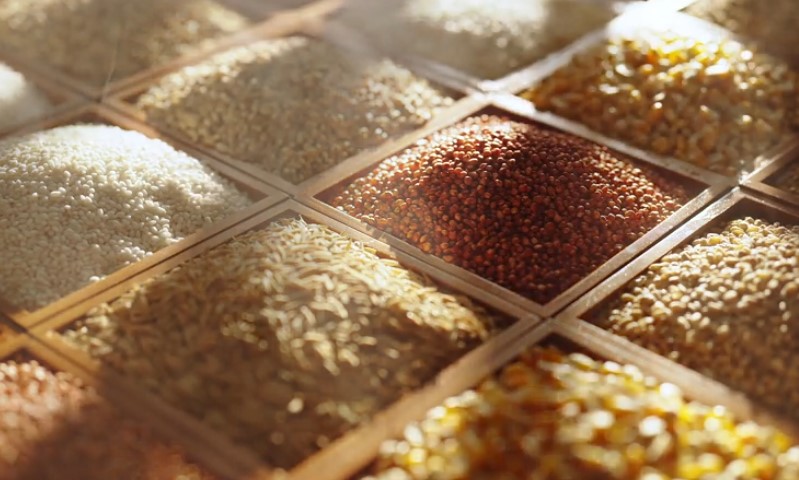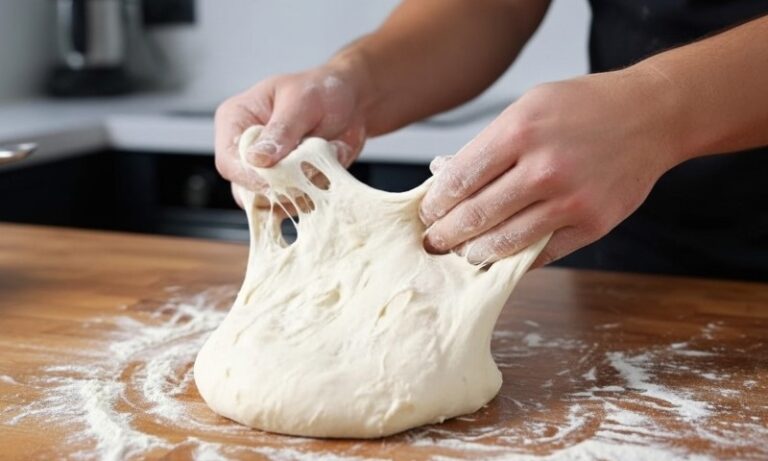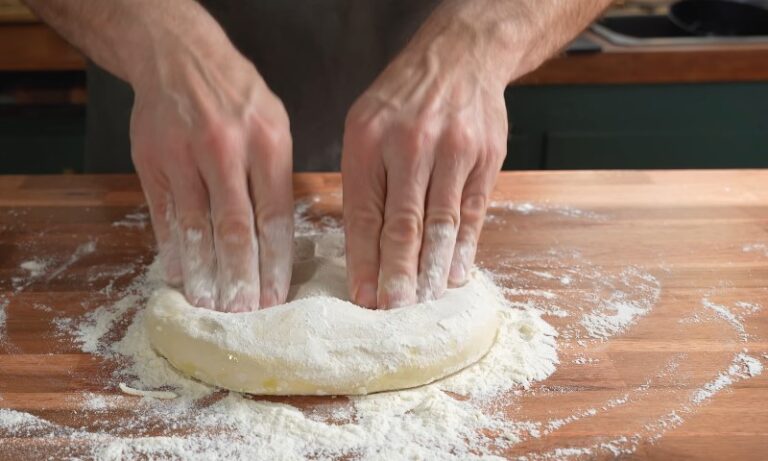Pizza often gets a bad rap in nutrition circles. It’s seen as indulgent, greasy, and loaded with carbs. But the truth is, not all pizza is the same, and we all know it. The crust, that base layer holding everything together, plays a major role in how healthy or heavy your slice really is.
And lately, menus and grocery shelves are filled with options labeled “whole grain” or “multigrain.” They sound equally virtuous, but the difference between them can be dramatic.
The type of grain used in your crust affects how full you feel, how your body handles the carbs, and even how your long-term health trends over time. Let’s look at what the science actually says about both types, and what you should watch for when choosing.
Table of Contents
ToggleKey Takeaways
- Whole-grain crusts use all parts of the grain : bran, germ, and endosperm, which means more fiber and nutrients.
- Multigrain crusts only guarantee multiple types of grain , not that any are whole.
- Check ingredient lists and fiber content to confirm you’re getting real whole grains.
- A true whole-grain pizza crust supports steadier blood sugar and better heart health.
- Marketing labels can mislead , so rely on the nutrition panel, not the buzzwords.
What Whole Grain Really Means

A grain is a structure. Every kernel has three major parts, and how those parts are treated determines whether the grain stays “whole” or gets stripped down.
- Bran: The tough outer shell. It’s where most of the fiber, B vitamins, and minerals live.
- Germ: The tiny “seed” portion that holds healthy fats, antioxidants, and vitamins.
- Endosperm: The starchy middle that’s mostly carbohydrates and protein.
When a product is labeled “whole grain,” it means all three of those parts are still present in their natural proportions. Nothing has been milled away or separated. Whole wheat, oats, brown rice, rye, barley, and quinoa all count when used in this form.
Major nutrition authorities, like the American Heart Association and Harvard’s Nutrition Source , regularly point out that whole grains deliver more fiber, vitamins, minerals, and plant compounds than refined ones.
They’ve been tied to lower risks of heart disease, stroke, diabetes, and even premature death. So when a pizza crust is genuinely made from whole-grain flour, you’re baking many of those benefits right into your base.
Why Multigrain Isn’t Always What It Seems
“Multigrain” sounds healthy because it suggests variety. But the label doesn’t promise that any of those grains are whole. It simply means more than one type of grain was used, and most of the time, that mix is still dominated by refined white flour.
Consumer advocacy groups and nutrition experts have been pointing out this confusion for years. The Center for Science in the Public Interest has reviewed “multigrain” products that contain almost no whole grain at all. In other words, the label can be more marketing than nutrition.
Health systems like Banner Health explain the difference clearly: “Whole grain” means at least 51% whole grain ingredients, while “multigrain” guarantees only multiple types of grain, not their quality.
Similarly, the U.S. Department of Veterans Affairs advises checking ingredient lists. If a food says “multigrain” but lists “enriched wheat flour” first, it’s mostly refined.
That’s the catch with multigrain pizza crusts. They might look or sound hearty, but they could still behave like regular white flour crust in your body, with fast digestion, low fiber, and a quick blood sugar spike.
How Much Whole Grain You Actually Need

Nutrition guidelines can help set expectations. The Dietary Guidelines for Americans recommend about six servings of grains a day for a 2,000-calorie diet, with at least half being whole grains. The American Heart Association echoes that recommendation, urging people to make whole grains the default choice whenever possible.
Yet most people don’t get enough fiber. U.S. adults typically average 15–18 grams per day, while the target is 25 grams for women and 31 grams for men. Choosing a whole-grain pizza crust can be an easy way to move closer to that goal without feeling like you’re eating “health food.”
Why Whole Grains Are Generally the Better Base
Whole-grain crusts outperform refined flour crusts in nearly every health measure. When researchers look at population data, people who eat more whole grains tend to have better heart health, lower diabetes rates, and improved digestion. Here’s why:
- Fiber: It supports gut bacteria, keeps you full longer, and stabilizes blood sugar.
- Nutrient Density: Whole grains hold onto magnesium, zinc, iron, B vitamins, and antioxidants.
- Glycemic Control: Diets rich in whole grains help lower the risk of insulin resistance and type 2 diabetes.
A 2024 review found that eating more whole-grain foods correlates with better blood sugar control. In the context of pizza, that means a whole-grain crust leads to a slower, steadier glucose rise compared to a refined one. You get more staying power from your meal instead of an energy crash an hour later.
How Glycemic Index Relates to Pizza Crust
The glycemic index (GI) measures how quickly a food raises your blood sugar. Standard white flour crusts have a high GI because the starches are finely milled and digested quickly. But the story changes with whole grains.
Several studies have experimented with pizza dough made from blends of whole wheat, rye, and other high-fiber flours. The results consistently show lower post-meal blood sugar levels compared to white flour doughs. The reason is simple: the fiber and intact grain structure slow digestion.
That doesn’t mean a whole grain pizza is automatically “low GI.” Toppings still matter, and cheese or meat can shift the overall impact. But crust made with real whole grains gives your body a better baseline for managing carbs.
Multigrain crusts are less predictable. If most of the mix is refined, they behave much like white crust. Only if the multigrain mix is built primarily from whole flours, like whole wheat, oat, and barley, does the glycemic impact resemble that of a true whole grain base.
Whole Grain vs. Multigrain Pizza Crust
| Feature | 100% Whole Grain Crust | Typical Multigrain Crust |
| Grain composition | Made entirely or mostly from whole grains | Blend of multiple grains, often refined |
| Fiber per serving | Usually 3g+ per slice | Highly variable, sometimes under 2g |
| Nutrient density | Rich in vitamins, minerals, and healthy fats | Depends on ratio of whole to refined grains |
| Glycemic behavior | Moderate, slower digestion | Unpredictable, often still high GI |
| Label clarity | “100% whole wheat” or “whole grain” | “Multigrain” only signals variety, not quality |
| Health evidence | Strong support for benefits | Depends entirely on formulation |
Reading Pizza Labels Matters A Lot
When you’re staring at options in the freezer aisle, small details on the label can tell you what kind of crust you’re actually getting.
1. Check the Ingredient Order
Ingredients are listed by weight. The first flour listed is the primary one. You want to see phrases like:
- “Whole wheat flour”
- “Whole rye flour”
- “Whole spelt flour”
If it starts with “enriched wheat flour” or just “wheat flour,” the product is refined. Even if the front says “multigrain,” that first ingredient reveals what’s really inside.
2. Look for “100% Whole Grain”
Manufacturers can legally use “made with whole grains” even if only a small fraction of the flour is whole. The more reliable label is “100% whole grain” or “100% whole wheat.”
3. Check Fiber on the Nutrition Panel
A simple shortcut: look for at least 3 grams of fiber per serving. Anything lower usually means the crust isn’t truly whole grain. If you’re seeing “multigrain” with only 1 gram of fiber, that’s just marketing.
4. Watch Out for Added Sugars, Sodium, and Fats
Some crusts add sugar or oil to improve texture and browning. Keep an eye on:
- Added sugars: should be minimal or zero.
- Sodium: ideally under 200 mg per slice.
- Saturated fat: avoid crusts using shortening or palm oil blends.
Those extra ingredients can cancel out the benefits of choosing whole grains.
What Happens in Restaurants and Delivery Chains

Most restaurant menus don’t show detailed ingredient lists, so your best clues are the wording and fiber numbers (if available). A few key terms can guide you:
- Whole wheat crust: usually made with genuine whole wheat flour.
- Multigrain crust: often refined flour mixed with seeds or other grains.
- Ancient grains crust: can vary widely; some are nutritious, others mostly refined.
Chains sometimes promote multigrain or ancient grain crusts for their flavor or appearance rather than health benefits. The safest move is to ask for whole wheat crust when possible or check nutrition info online before ordering.
Which Crust Is Really Healthier?
The answer is straightforward: whole grain crusts are the stronger nutritional choice .
They provide more fiber, more micronutrients, and a steadier glycemic profile. They also align with all major health organization guidelines. In comparison, multigrain crusts are a gamble. Without knowing how much of the mix is actually whole, there’s no guarantee of added benefit.
That said, not all multigrain crusts are bad. If you find one where the main flour is whole grain and the blend includes other whole grains like oats, rye, or barley, it can be just as nutritious.
What matters most is that the majority of the grains are whole, not just the variety.
Making Pizza Night Healthier Without Losing the Fun
A healthier crust doesn’t mean giving up good pizza. You can easily make small adjustments that keep the taste and improve the nutrition profile.
At Home
- Start with a mix: If you’re new to whole grain dough, use half white flour and half whole wheat flour.
- Experiment with fermentation: Longer proofing times develop flavor and make the dough easier to digest.
- Try alternative grains: Spelt, rye, or kamut flours bring depth and fiber while keeping the crust crisp.
- Use high-heat baking: Whole grain doughs benefit from hotter ovens to keep them light instead of dense.
Store-Bought or Delivery
- Choose frozen crusts labeled 100% whole grain or whole wheat .
- Skip “multigrain” products unless you confirm the fiber and ingredient details.
- When ordering, ask for a whole wheat crust if available.
- Keep toppings balanced. Vegetables, lean proteins, and less cheese go a long way.
The Real Payoff

Whole grains have been studied for decades, and the evidence keeps piling up. People who regularly eat them tend to have:
- Lower cholesterol and blood pressure
- Better gut health and digestion
- Lower risk of diabetes and heart disease
- Improved satiety after meals
When applied to something as common as pizza, it’s an easy upgrade that doesn’t feel restrictive. You’re still eating something satisfying; you’re just building it on a more nutrient-dense foundation.
Summary
The difference between whole grain and multigrain pizza crust might sound like marketing hair-splitting, but it affects your health in measurable ways. Whole grain means structural integrity; the grain’s full nutrition is intact. Multigrain means variety, not necessarily quality.
If your goal is to make pizza night a little smarter without giving up flavor or comfort, the easiest move is to start with a whole-grain base. It fits every major nutrition guideline, supports your body’s long-term health, and still tastes like real pizza should: warm, hearty, and satisfying.










